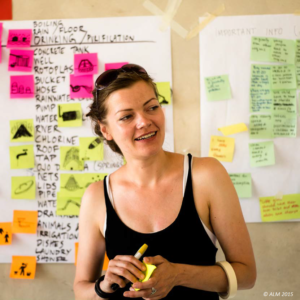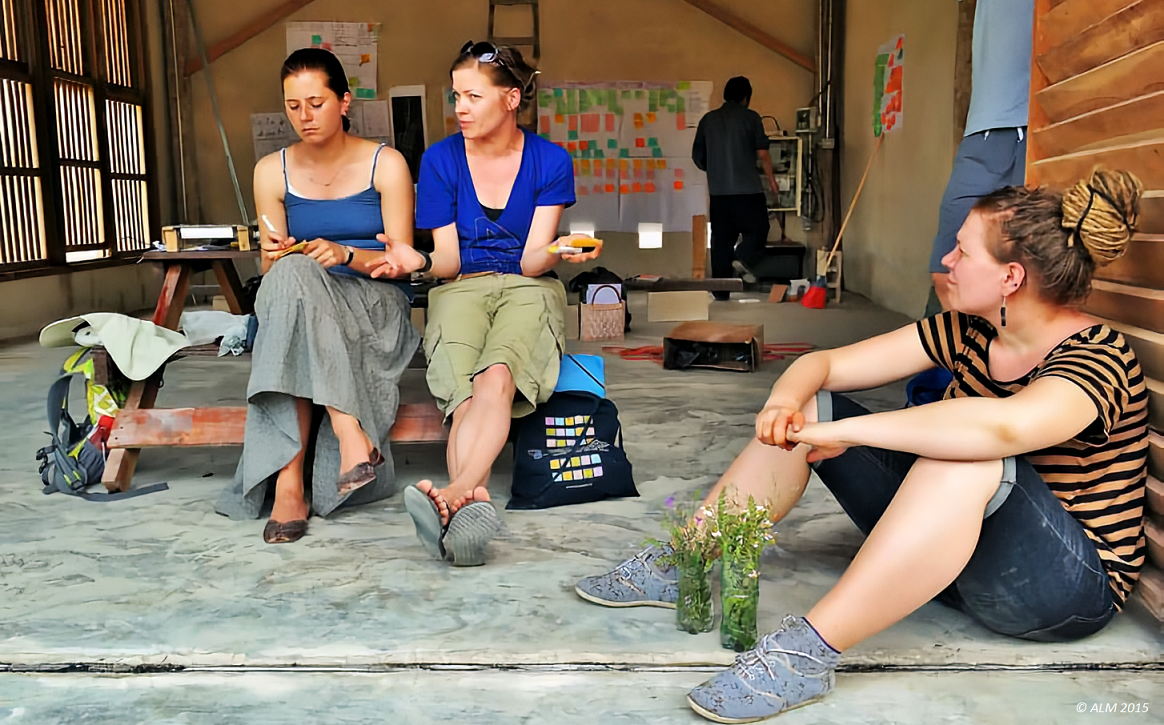Anni Hapuoja: Increasing the social value of buildings through participatory processes
 Anni Hapuoja is an architect who senses like a human, acts like an activist and dreams like futurist. Her work draws inspiration from empathy, collaboration, curiosity, and the creation of shared value. She runs a company called Et May with her associate Piritta, where she applies design thinking methodologies to reach solutions through the framework of service logic in architecture. Anni was part of the founding team of Action Lab Mexico – a project that later became one of the student cases of SGT Studio and has since been mentoring students on the theme of human-centered design.
Anni Hapuoja is an architect who senses like a human, acts like an activist and dreams like futurist. Her work draws inspiration from empathy, collaboration, curiosity, and the creation of shared value. She runs a company called Et May with her associate Piritta, where she applies design thinking methodologies to reach solutions through the framework of service logic in architecture. Anni was part of the founding team of Action Lab Mexico – a project that later became one of the student cases of SGT Studio and has since been mentoring students on the theme of human-centered design.
The multiple and versatile meanings of buildings
Society can be thought as individuals belonging to groups of various sizes. With this in mind, buildings should meet the human needs of these people, ranging from primitive (such as providing shelter), to more complex needs (i.e. enabling the interaction of people and services). Also, the aesthetics of a building very much dictates the feel and atmosphere of its immediate surroundings, thus having a significant influence in shaping the identity of a place or area. On a societal level, buildings can be seen as essential infrastructure that needs constant caring after by its users. As planners and consumers, we really need to become much more aware of what sustainable construction and renovation of buildings means and learn from history while challenging the future.
The value of participatory processes in architecture
Participation is a human right! Most of us get to participate in architecture, every day, as we are surrounded by it. We are all experts of our own living surroundings, and usually know best what works for us, what doesn’t. Sharing this kind of (user) information with designers, planners and other essential stakeholders is crucial when trying to develop something better, aiming for the common good. Participatory processes are based on interaction that teach us how to listen, share, reflect and iterate.
Participatory processes are based on interaction that teach us how to listen, share, reflect and iterate. Participation facilitates the growth of ownership, and when you give more, you get more. In other words, participatory processes especially increase the social value of architecture.
Is the co-creation of shared value possible in city planning?
If there is a will, there is always a way. As a city-planning activist, I would say that co-creation is what generates shared value, especially with city planning! City planning processes should take an even stronger stand on participation and co-creation, so that all stakeholders involved would understand the systemic big picture and their role in the generating shared value for all. As Aristotle once wisely stated, we are all greater than the sum of our parts!
Anni will be giving the opening lecture of WAT-E2060 Sustainable Built Environment (Period II) starting on the 1st of November. Registrations through Sisu.
Learn more about Anni and her work:
